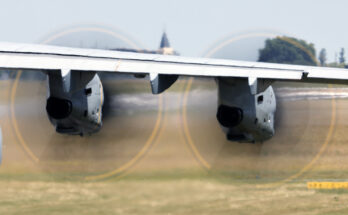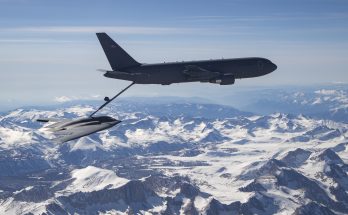
As tensions in the Taiwan Strait have escalated in recent years, Taiwan’s 2024 election loomed as a potential landmark event in cross-strait relations. Taiwanese voters took to the polls on Jan. 13 to select a new president to replace incumbent Tsai Ing-wen. Of a selection of three major candidates, William Lai Ching-te, current Vice President and a member of Tsai’s Democratic Progressive Party (DPP), emerged as the victor with approximately 40 percent of the vote. In his inauguration speech on May 20, Lai assured observers his administration would work for cross-strait stability; however, he reminded them that neither Taiwan nor China are “subordinate to each other” and called on Beijing to cease all “political and military intimidation against Taiwan.” Lai’s speech further affirmed the existence of Taiwan and its democracy and called upon his co-nationals to work to defend both. Despite certain moderate tones and calls for peace, the speech set off alarm bells in Beijing, where Chinese leaders were quick to condemn Lai and the speech as provocative and secessionist.
Beijing launched exercise Joint Sword 2024A three days later. From 7:45 am on May 23, aircraft, navy and coast guard ships began significant maneuvers to the north, south, east and west of the island. Calling the exercises “punishment” for Taiwan’s “separatist acts,” the PLA carried out patrols, battle simulations and drills involving practice strikes using live ammunition. The show of force was supported by ground and rocket force drills as well as other joint service training exercises.
According to Chinese media, the drills had several historic firsts including the first simulation of a full-scale attack, the first joint integration of coast guard and navy vessels as well as the first instance of Chinese ships reaching the outlying islands of Wuqiu and Dongyin. Considered strategically valuable, Taiwan’s outlying islands are situated much closer to the mainland and are adjacent to key transportation routes in the strait. It was reportedly also the closest Chinese military aircraft have come to the island of Taiwan, with 111 aircraft involved in the two-day exercises. The Joint Sword drills reflect some of the most thorough simulations of a Chinese attack on Taiwan so far, and Beijing has not ruled out further renditions of the exercise this year.
While the exercise was unlikely to be a prelude to an immediate invasion, Joint Sword signaled clear displeasure with Lai’s speech and the policies of the ruling DPP. Beijing has long viewed Lai personally with skepticism over his perceived support of Taiwanese secession. This sentiment was reinforced by comments made in 2017 while serving as Premier, in which he avowed himself as a “pragmatic worker for Taiwanese independence”, a statement that evoked ire and concern from China. While Lai is unlikely to govern as the secessionist zealot Chinese tabloids paint him as the DPP’s victory in a third consecutive term is unprecedented in Taiwan this century and may have reason to concern Beijing. Power has, since 2000, traded off between the DPP and rival Kuomintang (KMT), which has maintained a stance that Taiwan, formally the Republic of China, is the legitimate government of the Chinese mainland, with the two simply being divided parts of a single China. This stance, while still oppositional to the People’s Republic, is palatable to Beijing, as it keeps the latter’s One China policy intact and moves the self-governing island no further away from the mainland. Conversely, the DPP has been associated with the Taiwanization movement, which has advocated for a new identity for the island, distanced from its history with mainland China. At the most extreme levels, proponents of Taiwanization support formal independence for a Taiwanese nation-state, a sentiment that Beijing firmly opposes.
While China’s threat of further exercises may intimidate Lai’s administration, it may also have the opposite effect. By beginning his term with coercive measures, Beijing limits Lai’s options for a moderate stance and isolates potentially conciliatory Taiwanese citizens. The belligerent stance demonstrates the understatedly severe tensions between Chinese and Taiwanese leaders in the current moment, but also China’s view of its struggle with Taiwan in the long term. Chinese authorities are confident in a vision of inevitable reunification through the mainland’s political, economic and if necessary, military gravity. Particularly under the leadership of the more assertive and globally-minded President Xi Jinping, Chinese authorities do not view future reunification as a product of peaceful negotiation and compromise, but rather capitulation, be it military or otherwise.
As his four-year term begins, President Lai is tasked with managing unstable cross-strait tensions, at a time in which media and politicians openly discuss the possibility of Chinese military intervention. While Beijing has made clear its desire to unite with Taiwan, potentially even by force, the coercive mechanisms of military drills and armed incursion hamstring the potential for a peaceful resolution, even one in China’s favor. With the perception of a threat at Taipei’s doorstep, Lai may want or even need to situate himself in a position of strength in the eyes of the electorate and not be seen as backing down to a bully.
The newly formed Lai government will likely be further tested through military action and drills which both gauge Taiwan’s response and cultivate the capabilities of China’s armed forces. Whether in the form of future exercises, naval isolation of outlying islands or cyber and information warfare, Taiwan should expect Chinese incursions to continue to escalate as Beijing asserts itself more across the broader South China Sea. The direction of Taiwanese-Chinese relations will be tied to President Lai’s ability to navigate these challenges while keeping both Chinese authorities and Taiwanese voters satisfied, a delicate balance that will likely define his presidency and shape the future of cross-strait relations.
Tom Freebairn is a weapons analyst with Military Periscope covering naval affairs and maritime systems. He pursued an undergraduate degree in International Relations and Modern History, followed by a master's in Middle East, Caucasus, and Central Asia Security Studies from the University of St. Andrews. His master's thesis focused on the relationship between oil and separatist politics in Northern Iraq. Tom's interests include the politics of energy, ethnic separatism, the evolution of naval warfare, and classical history.




